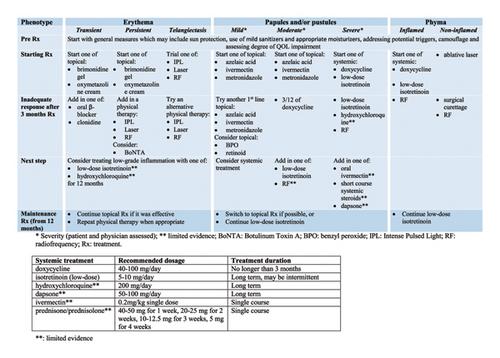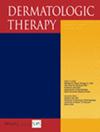Pharmaceutical Management of Rosacea—An Australian/New Zealand Medical Dermatology Consensus Narrative
IF 3.4
4区 医学
Q1 DERMATOLOGY
引用次数: 0
Abstract
Rosacea, a common chronic, predominantly centro-facial dermatosis, has previously been classified into distinct subtypes with a range of morphological signs that overlap with other inflammatory skin disorders. Recently, there has been a move towards diagnosis of clinical phenotypes, largely driven by a better understanding of the pathophysiology of rosacea and clinical trial endpoints. Despite this, treatment remains a challenge. The Australasian Medical Dermatology Group held a Rosacea workshop in November 2022 to develop a practical narrative. Eighteen recommendations were agreed upon using a modified eDelphi process in the first round, including a rosacea treatment algorithm.

红斑痤疮的药物治疗--澳大利亚/新西兰皮肤病医学共识叙述
红斑痤疮是一种常见的慢性皮肤病,主要发生在面部中心,以前曾被分为不同的亚型,其形态特征与其他炎症性皮肤病重叠。最近,人们开始对临床表型进行诊断,这主要是由于人们对酒渣鼻的病理生理学和临床试验终点有了更深入的了解。尽管如此,治疗仍然是一项挑战。澳大拉西亚医学皮肤病学组于 2022 年 11 月举办了一次酒渣鼻研讨会,以制定一份实用说明。在第一轮研讨会上,与会人员采用修改后的 eDelphi 流程就 18 项建议达成一致,其中包括酒糟鼻治疗算法。
本文章由计算机程序翻译,如有差异,请以英文原文为准。
求助全文
约1分钟内获得全文
求助全文
来源期刊

Dermatologic Therapy
医学-皮肤病学
CiteScore
7.00
自引率
8.30%
发文量
711
审稿时长
3 months
期刊介绍:
Dermatologic Therapy has been created to fill an important void in the dermatologic literature: the lack of a readily available source of up-to-date information on the treatment of specific cutaneous diseases and the practical application of specific treatment modalities. Each issue of the journal consists of a series of scholarly review articles written by leaders in dermatology in which they describe, in very specific terms, how they treat particular cutaneous diseases and how they use specific therapeutic agents. The information contained in each issue is so practical and detailed that the reader should be able to directly apply various treatment approaches to daily clinical situations. Because of the specific and practical nature of this publication, Dermatologic Therapy not only serves as a readily available resource for the day-to-day treatment of patients, but also as an evolving therapeutic textbook for the treatment of dermatologic diseases.
 求助内容:
求助内容: 应助结果提醒方式:
应助结果提醒方式:


